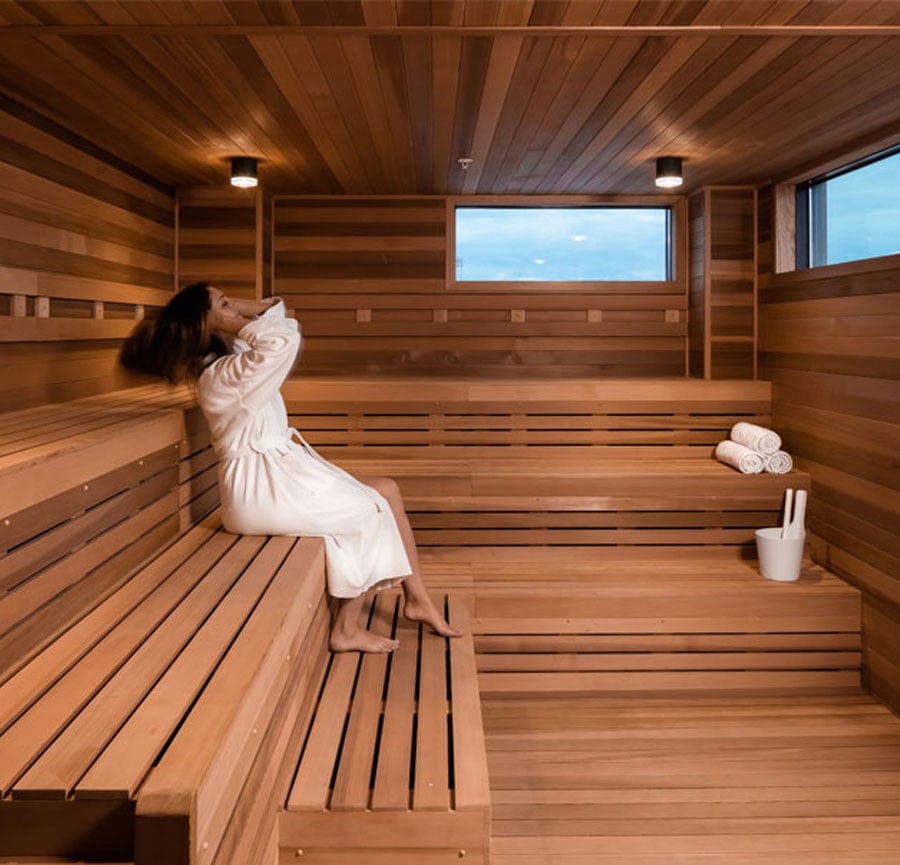Traditional Sauna - Questions
Traditional Sauna - Questions
Blog Article
Top Guidelines Of Traditional Sauna
Table of ContentsSome Known Facts About Traditional Sauna.The Ultimate Guide To Traditional SaunaGet This Report on Traditional SaunaThe Main Principles Of Traditional Sauna
The majority of the weight shed in a sauna is water loss and is re-gained upon rehydrating. Without an uncertainty sauna can be a vital component of a healthy and balanced weight loss program. To consider the distinctions in between conventional and IR saunas, I will certainly separate these into verifiable, theoretical, and produced distinctions.Therefore, the most popular point in the saunawhich is at the ceiling straight above the sauna heateris normally between 185 and 190 F. Traditional Sauna. Claims that a standard sauna surpasses 200 F is simply not true and not relevant for electric saunas sold in the United States. The temperature for a far-infrared sauna is typically set in between 120 and 140 F; nevertheless, unlike the conventional sauna, the objective in and IR space is not to accomplish a heat
Due to this, the temperature level distinction is practically irrelevant, given that excessive sweating results in both sauna kinds, however the approach of heating up the body is different. In an IR sauna the bather will certainly feel hot and will certainly sweat profusely, but at much lower temperature levels. Therefore, if the goal is to spend longer time periods in the sauna, the IR sauna is a good selection.

The 4-Minute Rule for Traditional Sauna
When the heat is accomplished, the aspects cycle on and off to preserve the heat. The majority of typical sauna customers delight in pouring water over the rocks to create steam to raise sauna humidity degrees. The advantages of putting water over the rocks consist of: making the room much more comfortable, moistening the nasal passages, and allowing the use of aromatherapy by mixing necessary oils with the water.
In a far-infrared sauna, the warm waves pass through the body to properly warm the body and elevate the body core temperature. To achieve this boosted temperature level, Far-infrared emitters create infrared energy which is close to the exact same wavelength as that which the body normally emitsoften referred to as the "Essential Variety" of 7 to 14 microns), so the energy is well received by the body.
When the energy gets in the my response body, it causes the body temperature to raise and inevitably causes sweat. In an infrared sauna it is necessary for the emitters/heaters to stay on practically continuously. Because there is no mass of rocks to retain warmth, the sauna will certainly cool if the emitters turned off.
As stated over, the sauna bather in an infrared space intends to place himself in front of running emitters to obtain maximum take advantage of the warm. The heating time for both spaces can be very various, depending upon how the areas are utilized. For a conventional sauna, a bather should enable 30-40 minutes for the area to accomplish a wanted temperature and to correctly pre-heat the rocks.
4 Simple Techniques For Traditional Sauna
A well created sauna will generally attain a temperature level of 150-160 F in about 30-40 minutes. For hotter temperatures, the area may need to warm for a longer duration.
To some, 15 mins was "thrown away" while the infrared energy heated the wood panels instead of warming a body, while others locate a pre-heated room to be extra comfortable and believe a raised beginning temperature is needed to start perspiring. The length of advised use for each and every room is roughly the very same (10-15 mins per session); however, because of the reduced air temperature levels and the capacity to really feel the results of infrared Look At This warmth much faster than a traditional sauna, it is not uncommon for a person to spend an overall of 20-30 minutes in an infrared sauna.
Standard saunas often tend to be bigger (thus use more power) than infrared saunas, although typical saunas are absolutely offered in one and two person dimensions. For a two-person typical sauna, 5x6 or 5x7 dimension is most prominent. The top bench can comfortably seat 2 or 3 people and is also enough time to exist down throughout the sauna session.


The ordinary expense per kWH of electrical power in the united state is around $0.11, so a 4.5 kW heating system will set you back roughly $.50 to compete one hour, if the heater runs continually for one hour. Normally a sauna heating unit will certainly run for 75% of the very first hour and 50% of subsequent hours on considering that the elements cycle once the set temperature level is accomplished.
The Best Guide To Traditional Sauna
A 2 person far-infrared area is typically physically smaller than a traditional sauna, typically regarding 4' x 4' or smaller sized. The IR home heating system is commonly 1.5-1.7 kW using a 120 volt 15 amp plug-in service. Because the space can be utilized faster than a sauna area, we will certainly think the room is used useful link for to of an hour including warm up time.
Ultimately, there is a hardly ever discussed difference in the social experience between the two rooms. While our culture has lost a few of the social advantage of the typical sauna experience, it can be very socially satisfying. From household time in the sauna, to heart-felt discussions with substantial others, to sauna partiesthe typical sauna experience can cause intimate mingling.
Many higher end infrared areas include tinted light therapy, audio systems and full-glass fronts.
Report this page